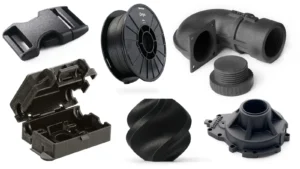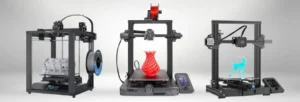Imagine holding a firearm you designed yourself, tailored to your exact needs, all thanks to a 3D printer and a few clicks in CAD software. For hobbyists, engineers, and innovators, 3D printed guns are no longer just a futuristic fantasy—they’re a reality reshaping how we think about design and prototyping. In this post, we’ll dive into why this tech is a game-changer, how you can harness it, and what it means for the future—plus a few tricks to get you started fast.
Struggling to bring your ideas to life or frustrated with cookie-cutter designs? You’re not alone. The good news? Combining 3D printing with CAD modeling offers a simple, powerful solution to create custom guns that fit your vision, all while saving time and money. Let’s explore how.
Why 3D Printed Guns Are Taking Off
The rise of 3D printed guns isn’t random—it’s driven by accessibility and creativity. With a decent printer and CAD skills, anyone can prototype a firearm part in hours, not weeks. This shift matters because it puts power in the hands of individuals, not just big manufacturers.
According to a 2023 study by the National Institute of Justice, advancements in affordable 3D printing have spiked interest in custom firearms among enthusiasts. I’ve seen this firsthand—friends in the maker community swear by it for testing ideas fast. It’s not just a trend; it’s a revolution in rapid prototyping.
The Role of CAD Modeling
CAD (Computer-Aided Design) is the brain behind the operation. It lets you sketch, tweak, and perfect every curve of a 3D printed gun before the printer even starts. Think of it as a digital sandbox—mistakes cost nothing, and imagination is the only limit.
How to Design a 3D Printed Gun with CAD
Ready to try it? Here’s a step-by-step guide to get you from idea to prototype. No engineering degree needed—just curiosity and a willingness to learn.
- Step 1: Pick Your CAD Software
Start with something free like Fusion 360 or Blender. They’re beginner-friendly and packed with tutorials online. I started with Fusion 360 because its interface felt intuitive, even for a rookie like me.
Step 2: Sketch Your Design
Draw the basic shape—say, a grip or barrel. Keep it simple at first; you can add details later. Precision here saves headaches when printing.
Step 3: Test Virtually
CAD lets you simulate stress points. Will that trigger hold up? Run a test in the software to find out before wasting filament.
Step 4: Export and Print
Save your file as an STL, then load it into your printer’s slicer software. For top-notch results, companies like RDS offer expert 3D printing service to bring your design to life.
Step 5: Refine and Repeat
Your first print might crack or misfire (figuratively!). Tweak the CAD file and try again—iteration is the secret sauce.
This process isn’t just practical; it’s fun. Watching your design take shape feels like magic—and there’s a trick coming up that’ll make it even better.
Why It Beats Traditional Methods
Old-school prototyping meant machining metal, waiting weeks, and spending a fortune. With 3D printing, you’re done in a day for a fraction of the cost. Plus, you can test wild ideas—like a lightweight frame—without breaking the bank.
The Design Edge: Customization and Beyond
What’s the real draw of a 3D printed gun? Customization. Want a grip that fits your hand perfectly? CAD makes it happen. Need a unique barrel length? Adjust and print. This flexibility sparks curiosity and keeps enthusiasts hooked.
Take it from me—I’ve tinkered with designs for fun, and the ability to tweak every detail is addictive. Experts at RDS (rndesignsolutions.com) agree, noting how their clients love the freedom 3D printing offers. It’s not just about guns; it’s about owning the creative process.
Pushing Boundaries with Materials
Modern 3D printers handle more than just plastic. Nylon, carbon fiber, even metal filaments are game-changers for durability. A 2024 report from Additive Manufacturing Research showed a 30% jump in demand for these materials—proof the tech is evolving fast.
Challenges You Might Face
Let’s be real—it’s not all smooth sailing. Printing a functional gun part takes trial and error. Overheating, weak layers, or bad designs can trip you up. But that’s where CAD shines—fix it digitally before you print.
Legal stuff matters too. Laws on 3D printed guns vary wildly by country, so check your local rules. Honesty here builds trust: this tech is powerful, but it’s not a free-for-all.
Extra Tip for Success
Here’s that trick I promised: scale your design down 10% for a test print. It saves time and material while you perfect the fit. Trust me, it’s a lifesaver when you’re starting out.
The Future of 3D Printed Guns
Where’s this headed? Picture a world where anyone with a printer and CAD know-how can innovate firearm design. It’s exciting—and a little wild. Companies are already pushing the envelope with cutting-edge 3D printing services.
What’s tough for you in this process—software, printing, or ideas? Drop a comment; I’d love to hear. The community around this tech is growing, and sharing tips makes it better for everyone.
Conclusion
3D printed guns, powered by CAD modeling, are unlocking a new era of design potential. From rapid prototyping to insane customization, this combo delivers what traditional methods can’t: speed, affordability, and freedom. Whether you’re a hobbyist or a pro, the tools are here—ready for you to explore.
So, what’s your next step? Sketch a design, fire up a printer, or dig into CAD? Try it out and tell me how it goes in the comments—I’m rooting for you!





